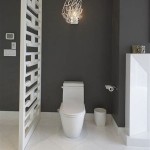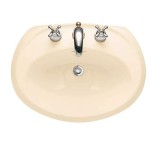How To Lock a Bathroom Door
Maintaining privacy in the bathroom is a fundamental aspect of comfortable living. A properly functioning lock is essential for ensuring this privacy. This article will cover various methods of locking bathroom doors, troubleshooting common issues, and addressing specific lock types.
Standard Privacy Locks: Most bathroom doors utilize a simple privacy lock built into the door handle. This mechanism typically involves a button or a turnpiece on the interior side of the doorknob. To engage the lock, simply press the button or turn the piece. A small pin extends from the doorknob into the doorjamb, preventing the door from opening. To unlock, reverse the process – press the button again or turn the piece back to its original position.
Turn-Button Locks: Similar to standard privacy locks, turn-button locks are operated by a small, round knob located on the interior side of the door. Rotating the knob engages the lock mechanism. These locks are generally simple to operate and require minimal maintenance.
Push-Button Locks: These operate by pressing a button on the interior doorknob. The button depresses a spring-loaded mechanism, extending a latch bolt into the doorjamb. Pushing the button again retracts the latch and unlocks the door.
Exterior Emergency Release: Bathroom privacy locks generally include a small hole on the exterior side of the doorknob. This allows for emergency access in case someone becomes locked inside. A small, straight object like a paperclip or a small screwdriver can be inserted into this hole to release the lock mechanism. It is important to be aware of the location and function of this emergency release.
Troubleshooting Common Issues: Several problems can arise with bathroom door locks. One common issue is a stuck lock. This can often be resolved by applying lubricating oil to the lock mechanism. Insert the lubricant into the keyhole or around the moving parts of the latch bolt. Work the lock back and forth to distribute the lubricant. If lubrication doesn’t resolve the issue, the lock mechanism may need to be disassembled and cleaned, or possibly replaced.
Door Alignment: Sometimes, a door that seems difficult to lock is simply misaligned. Check the hinges and the doorjamb for any signs of damage or warping. If the door is not sitting squarely in the frame, it may prevent the latch bolt from engaging properly. Adjusting the hinges or the strike plate on the doorjamb can often correct this problem.
Latch Bolt Issues: The latch bolt is the part of the lock that extends into the strike plate on the doorjamb. If the latch bolt is bent, broken, or misaligned, it may prevent the door from locking correctly. Examine the latch bolt for any signs of damage. If the latch bolt is damaged, it will need to be replaced.
Strike Plate Alignment: The strike plate is the metal plate on the doorjamb that receives the latch bolt. Ensure the strike plate is securely fastened and aligned correctly with the latch bolt. If the strike plate is loose or misaligned, tighten the screws or adjust its position.
Types of Bathroom Locks: Beyond the standard privacy locks, other types of locks can be used for bathroom doors. Keyed entry locks offer greater security but are less common for interior bathroom doors. Deadbolt locks, typically used for exterior doors, provide maximum security, but are generally not recommended for bathroom doors due to safety concerns in emergencies.
Childproof Locks: For households with young children, childproof locks provide an additional layer of safety. These locks typically involve a mechanism located higher on the door, out of reach of small children. These can prevent children from accidentally locking themselves in the bathroom.
Maintaining Bathroom Door Locks: Regularly lubricating the lock mechanism can prevent sticking and ensure smooth operation. Inspecting the latch bolt, strike plate, and hinges for damage or misalignment can help to prevent future problems. Addressing any issues promptly can extend the lifespan of the lock and maintain the privacy of the bathroom.
Considering Privacy Needs: When selecting a bathroom door lock, consider the specific privacy needs of the household. Standard privacy locks are generally sufficient for most situations. However, in certain circumstances, additional security measures, like keyed entry locks, might be considered.

Bathroom Door Lock Types A Helpful Guide With Images

Bathroom Door Lock Types A Helpful Guide With Images

Bathroom Door Lock Types A Helpful Guide With Images

5 Security Considerations For Bathroom Door Locks

Diy Project Installing A Bathroom Lock

Bathroom Door Lock Types A Helpful Guide With Images

Bathroom Door Lock Types A Helpful Guide With Images

Bathroom Door Lock Types A Helpful Guide With Images

Locked Out Of Your Bathroom 8 Ways To Unlock Door

A Look At The Diffe Types Of Bathroom Door Locks
Related Posts







